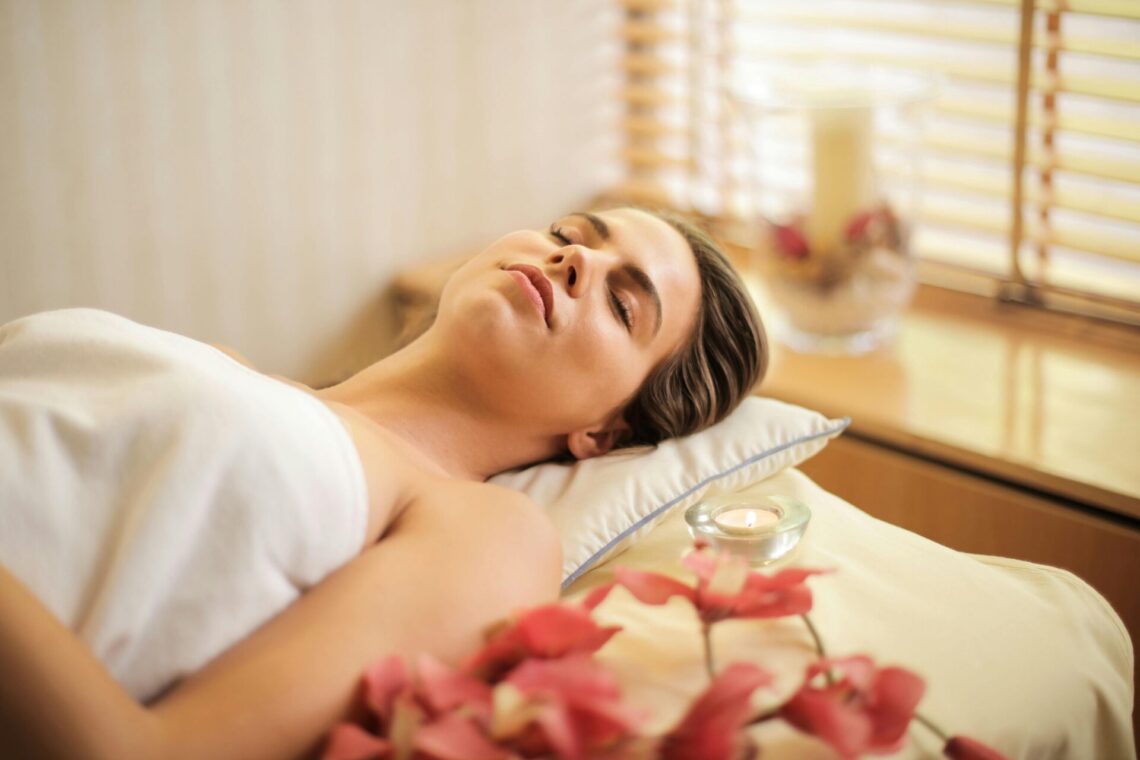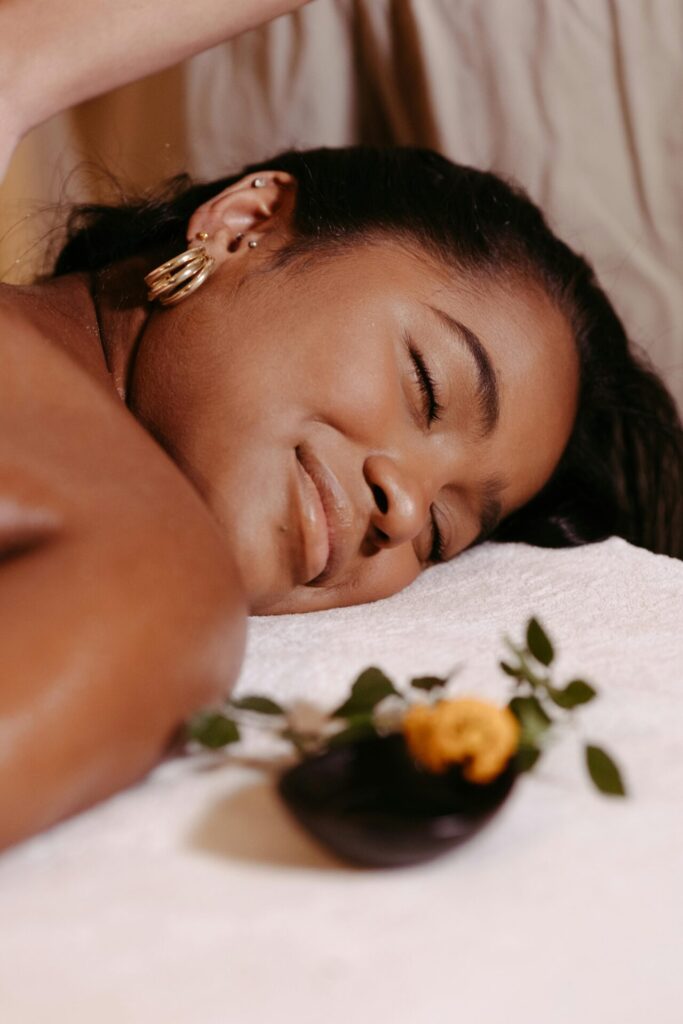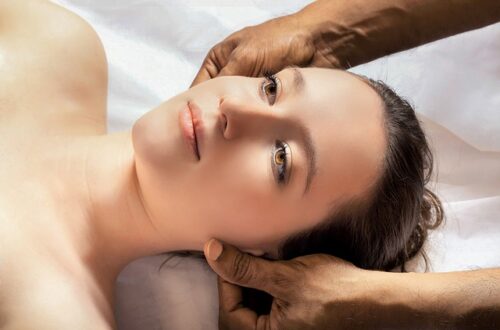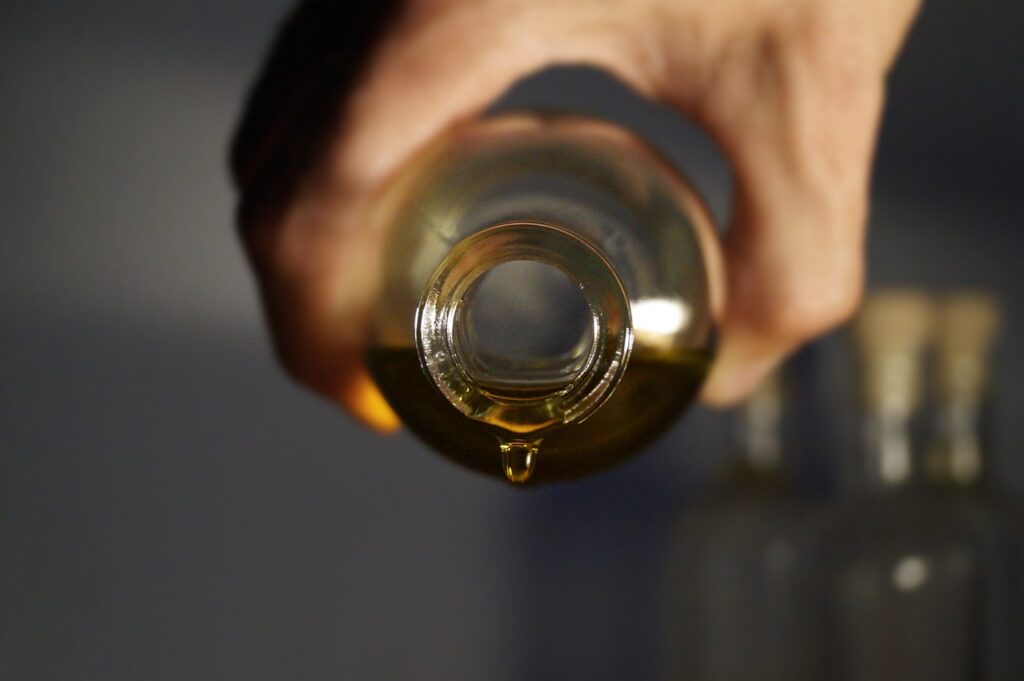
The Power of Abhyanga: Self-Massage for Rejuvenation
In the relentless rush of daily life, prioritizing self-care often slips through the cracks. Yet, imagine if a timeless, uncomplicated practice existed to nourish your body, calm your mind, and foster overall well-being. That’s Abhyanga for you, the revered Ayurvedic tradition of self-massage using warm oil.
Abhyanga, which translates to “self-oilation” in Sanskrit, is a form of self-massage that offers numerous benefits for rejuvenation and overall well-being. Originating from India thousands of years ago, Ayurveda is a holistic system of medicine that emphasizes the balance between mind, body, and spirit to achieve optimal health. Ayurveda teaches that our bodies and minds are connected, and Abhyanga helps keep both in good shape. It’s like giving yourself a treat that’s good for your body and your mood. Let’s delve deeper into world of ABHYANGA and understand the power of it and how it can promote rejuvenation.
Understanding Abhyanga
Abhyanga, derived from the Sanskrit words “abhi” meaning ‘towards’ and “anga” meaning ‘limbs’, is a therapeutic self-massage technique that involves the application of warm oil to the body. This ancient practice has been cherished for centuries in India for its ability to promote health, longevity, and vitality. Abhyanga goes beyond mere physical relaxation; it nourishes the body, calms the mind, and nurtures the spirit.
The Philosophy of Abhyanga in Ayurveda
At the heart of Ayurveda lies the belief that optimal health is achieved through harmony and balance between the body, mind, and spirit. According to Ayurvedic principles, each individual possesses a unique constitution, or dosha, which governs their physical and mental characteristics. The three doshas—Vata, Pitta, and Kapha—reflect different combinations of the five elements: ether, air, fire, water, and earth.
Abhyanga is deeply rooted in Ayurvedic philosophy, designed to restore balance to the doshas and promote holistic well-being. By massaging the body with warm oil, Abhyanga pacifies Vata dosha, calms Pitta dosha, and soothes Kapha dosha, thereby harmonizing the entire system. This balancing effect not only prevents disease but also enhances vitality and longevity.
The Benefits of Abhyanga
1. Promotes Relaxation and Stress Reduction:
In today’s fast-paced world, stress has become a ubiquitous part of life, taking a toll on our physical and mental health. Abhyanga offers a sanctuary of calm amidst the chaos, providing a deeply relaxing experience that soothes the nervous system and promotes stress relief. The gentle strokes of self-massage induce a state of deep relaxation, easing tension from both the body and mind.
2. Improves Circulation and Detoxification:
Massaging the body with warm oil enhances blood circulation, facilitating the delivery of nutrients and oxygen to cells while aiding in the removal of metabolic wastes and toxins. The rhythmic movements of Abhyanga stimulate the lymphatic system, promoting detoxification and enhancing the body’s natural healing processes. This improved circulation also contributes to glowing, radiant skin.
3. Nourishes the Skin:
The application of oil during Abhyanga deeply moisturizes and nourishes the skin, leaving it soft, supple, and radiant. Regular practice of Abhyanga helps maintain the skin’s natural elasticity, preventing dryness, and premature aging. Additionally, certain herbal oils infused with specific herbs can address specific skin concerns, such as inflammation or acne, further enhancing the therapeutic benefits of Abhyanga.

4. Supports Joint Health and Flexibility:
Abhyanga is particularly beneficial for promoting joint health and flexibility, making it an ideal practice for individuals suffering from stiffness or discomfort. The warm oil penetrates deeply into the tissues, lubricating the joints and reducing friction, thereby improving mobility and range of motion. Regular Abhyanga can help alleviate joint pain and stiffness, promoting overall musculoskeletal health.
5. Enhances Mental Clarity and Emotional Well-being:
Beyond its physical benefits, Abhyanga also has profound effects on mental and emotional well-being. The soothing nature of self-massage calms the mind alleviates anxiety and promotes mental clarity and focus. By nurturing the body, Abhyanga nurtures the spirit, fostering a sense of inner peace, contentment, and emotional balance.
How to Perform Abhyanga
Performing Abhyanga, the ancient Ayurvedic practice of self-massage with warm oil, is a deeply nourishing and rejuvenating experience that promotes overall well-being. This ritual, rooted in Ayurvedic philosophy, not only enhances physical health but also fosters mental and emotional balance. Here’s a detailed guide on how to perform Abhyanga effectively:
1. Choose the Right Oil:
Selecting the appropriate oil is crucial for a successful Abhyanga practice. Different oils are recommended based on your body type or dosha constitution in Ayurveda:
- Vata Dosha: Sesame oil is commonly used for individuals with a predominant Vata dosha. It’s warming and grounding properties help to balance Vata’s cold and erratic qualities.
- Pitta Dosha: Coconut oil is recommended for Pitta types due to its cooling and soothing nature, which helps pacify Pitta’s heat and intensity.
- Kapha Dosha: Almond oil is suitable for Kapha dosha individuals as it is light and easily absorbed, countering Kapha’s tendency towards heaviness and stagnation.
Additionally, herbal oils infused with specific Ayurvedic herbs can be chosen based on individual imbalances or therapeutic needs.
2. Warm the Towel:
Before starting your massage, prepare a warm towel. Heating the towel and placing it on your body after the massage helps to further relax the muscles and facilitates better absorption of the oil. It also adds an extra layer of comfort to your self-care routine.
3. Warm the Oil:
Before beginning the massage, gently warm the chosen oil to a comfortable temperature. This can be achieved by placing the oil container in a bowl of warm water or using a double boiler. Ensure that the oil is not too hot to avoid burns but warm enough to penetrate the skin deeply.
4. Prepare the Space:
Find a quiet and warm space where you can perform your Abhyanga without distractions. Creating a serene atmosphere is essential for relaxation and allowing yourself to fully immerse in the experience. Consider dimming the lights, playing soothing music, or incorporating aromatherapy with essential oils if desired.
5. Begin with the Head:
Start the massage by applying a small amount of warm oil to your scalp. Using gentle circular motions with your fingertips, massage the oil into the scalp, stimulating circulation and nourishing the hair follicles. Continue to massage the oil into the face, ears, and neck using upward strokes to promote lymphatic drainage and release tension.
6. Massage the Body:
Moving on to the body, apply generous amounts of oil to the arms, legs, abdomen, chest, and back. Use long, sweeping strokes on the limbs and circular motions around the joints. Pay special attention to areas of tension or soreness, adjusting the pressure as needed to provide relief and relaxation. The massage should be performed with mindful awareness, allowing you to connect with your body and release any accumulated stress or tension.
7. Focus on Self-Care:
During the massage, focus on self-care and nurturing yourself both physically and emotionally. Take deep, conscious breaths to center yourself and remain present in the moment. Listen to your body’s cues and adjust your massage technique accordingly, honoring your body’s unique needs and preferences.
8. Leave the Oil On:
After completing your Abhyanga massage, allow the oil to remain on your skin for at least 15-20 minutes. This allows the nourishing properties of the oil to penetrate deeply into the skin, promoting hydration, rejuvenation, and overall health. For a more intensive treatment, you can leave the oil on overnight, covering your body with a towel or wearing old clothing to prevent staining.
9. Clean Up:
Once you have finished your Abhyanga, take care to clean up any excess oil to prevent slips and falls. Wipe down any surfaces that may have come into contact with the oil, such as countertops or floors. Wash your towels and linens promptly to avoid staining and maintain cleanliness.
Incorporating Abhyanga into Your Routine
For maximum benefits from Abhyanga, consistency is vital. Make it a goal to integrate this rejuvenating practice into your daily routine. You can choose to do it in the morning to invigorate yourself for the day ahead, or in the evening to unwind and prepare for a restful night’s sleep.
Begin with shorter massage sessions, maybe 5-10 minutes, and gradually extend the duration as you grow accustomed to the practice. This gradual approach will help you ease into the routine and establish Abhyanga as a sustainable part of your self-care regimen.
The Takeaway
Abhyanga is a simple yet profound act of self-care that everyone can embrace in their daily lives. With its multitude of benefits for the body and mind, Abhyanga provides a meaningful route to rejuvenation and a stronger bond with oneself. So, pause, breathe deeply, heat up your oil, and embark on a journey of self-love and wellness through Abhyanga. You’ll be amazed at how this simple ritual can positively transform your health and happiness. Start your Abhyanga journey today and embrace the beauty of self-care!


You May Also Like

Exploring the Doshas: Kapha in Ayurveda
23 August 2023
Exploring the Doshas: Vata in Ayurveda
15 July 2023
